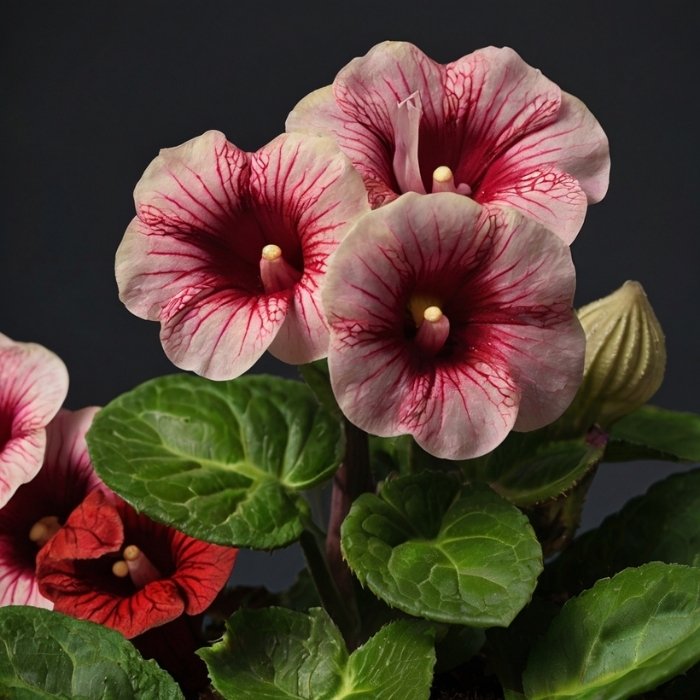Comprehensive Guide to Gloxinia Care and Cultivation
Gloxinia, scientifically known as Sinningia speciosa, is a stunning flowering plant renowned for its velvety, trumpet-shaped blooms and vibrant colors. Native to South America, this plant has become a favorite among indoor gardening enthusiasts due to its captivating beauty and relatively straightforward care requirements. In this guide, we will explore everything you need to know about growing and maintaining gloxinia to perfection.
Understanding Gloxinia: Characteristics and Varieties
Gloxinia belongs to the Gesneriaceae family, which includes other popular flowering plants like African violets. Its most defining features are its large, velvety flowers and lush green foliage. Available in various colors such as red, purple, pink, and white, gloxinia blooms can last for weeks with proper care.
Popular Varieties of Gloxinia
- ‘Emperor Frederick’: Features deep crimson blooms with contrasting white edges.
- ‘Hollywood’: Known for its rich purple flowers.
- ‘Blush Pink’: Exhibits soft pink petals with a white throat.
- ‘Tigrina Blue’: Offers unique speckled blue flowers with white accents.
Optimal Growing Conditions for Gloxinia
To achieve vibrant blooms and healthy growth, it is crucial to provide the ideal environment for your gloxinia.
1. Light Requirements
Gloxinia thrives in bright, indirect sunlight. Direct sunlight can scorch its delicate leaves, so placing it near an east or north-facing window is ideal. If natural light is insufficient, consider using fluorescent grow lights for 12-14 hours a day.
2. Temperature and Humidity
These tropical plants prefer warm conditions. Maintain temperatures between 65°F and 75°F (18°C to 24°C). Humidity is equally important; aim for 50-60% humidity to prevent the leaves from drying out. Using a humidifier or a pebble tray can help maintain the required humidity levels.
3. Soil and Pot Selection
Gloxinia requires well-draining soil with good aeration. A mix of peat moss, perlite, and vermiculite works well. Use a shallow pot with drainage holes to avoid waterlogging, which can lead to root rot.
Planting and Propagation
1. Planting Gloxinia Tubers
- Choose firm, healthy tubers with no signs of rot or mold.
- Plant the tuber in moist soil with the concave side facing up.
- Cover lightly with soil and water sparingly until shoots appear.
2. Propagation
Gloxinia can be propagated through:
- Leaf Cuttings: Select a healthy leaf, cut it into segments, and place them in a moist potting mix. Roots will develop in a few weeks.
- Seeds: Sow seeds on the soil surface and lightly mist with water. Keep the container covered until germination occurs.
Watering and Fertilization
1. Watering
Gloxinia requires consistent moisture but does not tolerate waterlogged conditions. Use lukewarm water to prevent shocking the roots. Water the plant at the base to avoid wetting the leaves, which can lead to fungal issues.
2. Fertilization
Feed gloxinia with a balanced, water-soluble fertilizer every two weeks during the growing season. Reduce feeding during the dormant period.
Seasonal Care: Dormancy and Rejuvenation
Gloxinia undergoes a natural dormancy period after flowering. During this phase:
- Gradually reduce watering as the leaves yellow and die back.
- Store the tuber in a cool, dry place at around 50°F to 60°F (10°C to 15°C).
- After 2-3 months, repot the tuber in fresh soil to encourage new growth.
Common Problems and Solutions
1. Pests
- Aphids and spider mites are common pests. Treat infestations with insecticidal soap or neem oil.
- Regularly inspect plants for early signs of pest activity.
2. Diseases
- Powdery Mildew: Prevent by ensuring good air circulation and avoiding overhead watering.
- Root Rot: Avoid overwatering and ensure proper soil drainage.
3. Growth Issues
- Lack of Blooms: Check light levels and fertilization routine. Insufficient light or nutrients can hinder flowering.
- Wilting Leaves: This can indicate overwatering or low humidity.
Enhancing Gloxinia Blooms
To encourage larger and more vibrant blooms:
- Pinch off spent flowers to redirect energy to new growth.
- Rotate the pot periodically to ensure even light exposure.
- Provide consistent care and monitor for signs of stress.
Decorating with Gloxinia
Gloxinia’s striking flowers make it a standout addition to indoor spaces. Place them on window sills, tabletops, or as part of a mixed floral display. Pairing gloxinia with other tropical plants can create an enchanting indoor garden.
Conclusion
With its dazzling flowers and manageable care requirements, gloxinia is an excellent choice for both novice and experienced gardeners. By following the guidelines outlined above, you can enjoy a flourishing gloxinia that enhances the beauty of your home. Bellflowers

